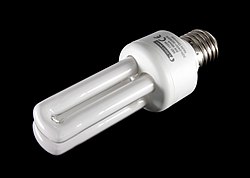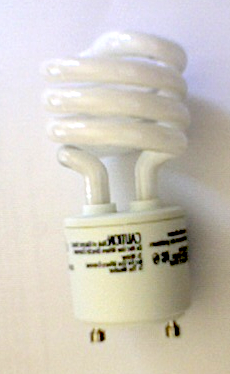Introduction to Compact Fluorescent Lamp (CFL)
– CFL is a fluorescent lamp designed to replace incandescent bulbs
– CFLs use a curved or folded tube and a compact electronic ballast
– CFLs use one-fifth to one-third the electric power of incandescent lamps
– CFLs last eight to fifteen times longer than incandescent lamps
– CFLs have a higher purchase price but save over five times their cost in electricity
Disposal and Environmental Impact
– CFLs contain toxic mercury, making their disposal complicated
– Many countries have banned disposal of CFLs with regular garbage
– Special collection systems for CFLs and hazardous waste have been established
– CFLs emit ultraviolet light that is converted into visible light and heat
– Improved phosphor formulations have improved the perceived color of CFL light
Competition with LED Lamps
– White LED lamps compete with CFLs for high-efficiency lighting
– General Electric has stopped production of domestic CFL lamps in the US in favor of LEDs
History of CFL Development
– The parent to the modern fluorescent lamp was invented in the 1890s
– In 1927, a high-pressure vapor lamp was patented
– General Electric created a practical fluorescent lamp in 1938
– Circular and U-shaped lamps were devised to reduce the length of fixtures
– The spiral CFL was invented in 1976 in response to the 1973 oil crisis
Milestones in CFL Technology
– Philips introduced the first successful screw-in replacement for an incandescent lamp in 1980
– Osram started selling the first CFL with an electronic ballast in 1985
– Volume was a challenge in CFL development, requiring high-efficacy phosphors
– CFLs had to fit in the same volume as comparable incandescent lamps
– New rare earth aluminum lattice phosphors solved the problem of lumen depreciation. Source: https://en.wikipedia.org/wiki/Compact_fluorescent_lamp
A compact fluorescent lamp (CFL), also called compact fluorescent light, energy-saving light and compact fluorescent tube, is a fluorescent lamp designed to replace an incandescent light bulb; some types fit into light fixtures designed for incandescent bulbs. The lamps use a tube that is curved or folded to fit into the space of an incandescent bulb, and a compact electronic ballast in the base of the lamp.
Compared to general-service incandescent lamps giving the same amount of visible light, CFLs use one-fifth to one-third the electric power, and last eight to fifteen times longer. A CFL has a higher purchase price than an incandescent lamp, but can save over five times its purchase price in electricity costs over the lamp's lifetime. Like all fluorescent lamps, CFLs contain toxic mercury, which complicates their disposal. In many countries, governments have banned the disposal of CFLs together with regular garbage. These countries have established special collection systems for CFLs and other hazardous waste.
The principle of operation remains the same as in other fluorescent lighting: electrons that are bound to mercury atoms are excited to states where they will radiate ultraviolet light as they return to a lower energy level; this emitted ultraviolet light is converted into visible light as it strikes the fluorescent coating, and into heat when absorbed by other materials such as glass.
CFLs radiate a spectral power distribution that is different from that of incandescent lamps. Improved phosphor formulations have improved the perceived color of the light emitted by CFLs, such that some sources rate the best "soft white" CFLs as subjectively similar in color to standard incandescent lamps.
White LED lamps compete with CFLs for high-efficiency lighting. General Electric has since stopped production of domestic CFL lamps in the United States in favour of LEDs.



